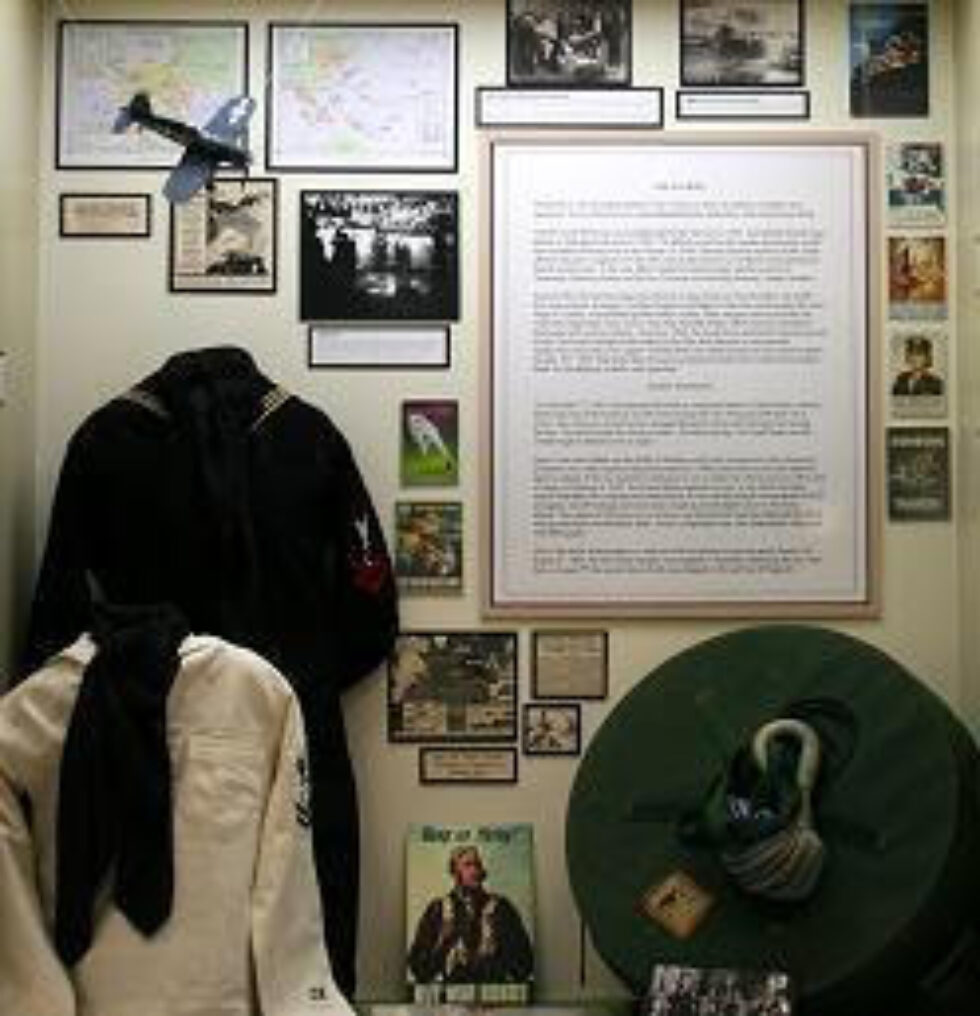
The World at War: Memories of World War I and World War II explored the causes and effects of WWI and WWII, and highlighted Galveston’s role during both global conflicts.

Visitors were able to view dozens of military uniforms, weapons, medals, photographic images, and other artifacts from the wars. One of the most unusual items on display was a German gas mask from World War I. The mask was collected by Lt. Charles N. Barrow of Galveston. It was found on the field after the German retreat at Cierges, France on August 2, 1918.
The exhibit included a variety of helmets from both wars. Among the most striking was a WWI German pickelhaube, or spiked helmet. These helmets were used by police and military officials from 1842 until the time of WWI. It was discovered during the First World War that the leather helmets were not suitable for trench warfare. These offered virtually no protection against head wounds from exploding shells and shrapnel. By 1916, durable steel helmets, called stahlhelm, replaced the pickelhauben.

A stunning 20-piece presentation silver service was also displayed in the gallery. The set was a gift from the citizens of Galveston to the crew of USS Galveston, a naval vessel commissioned in 1904. Galveston served in the Asiatic Fleet during WWI. She transported troops and supplies between the Philippines and ports in Japan and China.
An assortment of honorary medals, sleeve insignia, and other military decorations from WWI and WWII were on exhibit. Especially notable were items that belonged to Maurius Chataignon, a veteran of WWI and WWII, and the pastor of Galveston’s Sacred Heart Church from 1924 – 1957. Monsignor Chataignon served as a military chaplain, and his Bronze Star, Legion of Merit, and dog tags — with religious medals attached — were on exhibit.
Visitors could view photographs of troops being trained at Fort Crockett during WWII. The military installation was located near 53rd Street and Seawall, the present-day location of the San Luis Resort. There were additional photographs of Fort San Jacinto on the northeastern tip of Galveston Island and of Fort Travis on Bolivar Peninsula.
